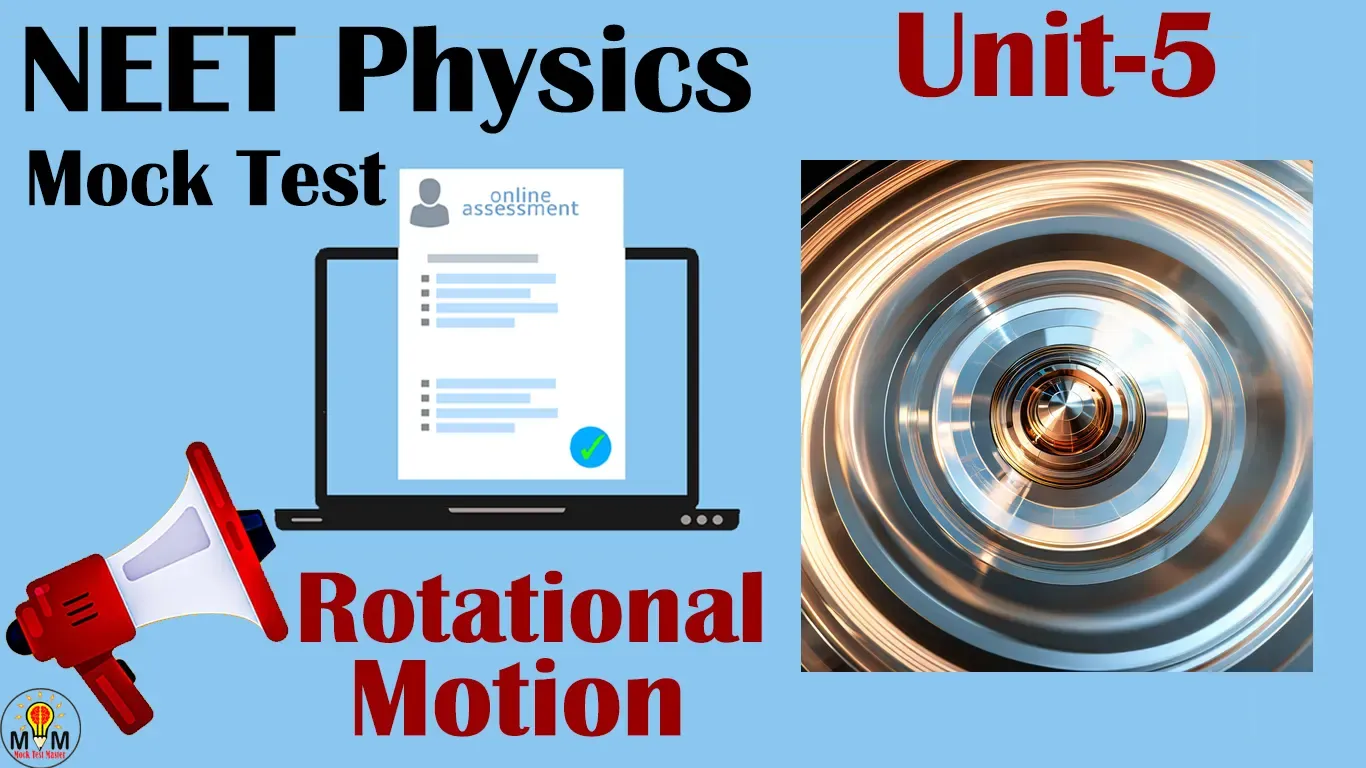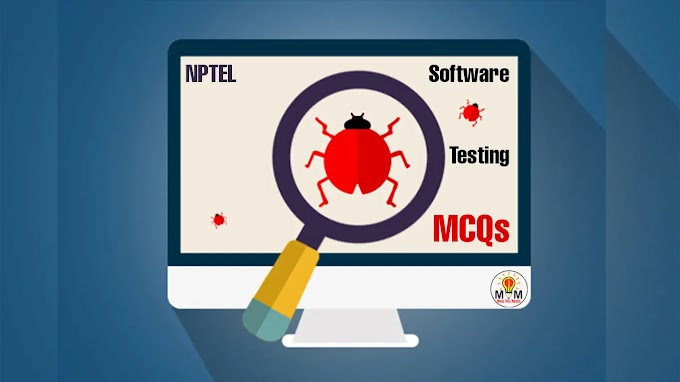NEET Physics
Unit 5: Rotational Motion delves into the dynamics of rotating bodies, which is
essential for understanding various phenomena in physics, ranging from
celestial motions to mechanical systems. Mastery of rotational motion concepts
is crucial for aspiring medical professionals preparing for the NEET exam.
In this
comprehensive guide, we'll explore NEET Physics Unit 5: Rotational Motion in
detail and provide a set of multiple-choice questions (MCQs) to help you assess
your understanding and excel in the exam. MCQs on NEET Physics Unit 5
Rotational Motion cover all topics and questions with answers that are given in
the latest Physics syllabus for the NEET exam.
Syllabus of Physics Unit 5 Rotational Motion
Centre of the
mass of a two-particle system, Centre of the mass of a rigid body: Basic
concepts of rotational motion; moment of a force; torque, angular momentum,
conservation of angular momentum and its applications; The moment of inertia,
the radius of gyration, values of moments of inertia for simple geometrical
objects, parallel and perpendicular axes theorems. and their applications.
Equilibrium of rigid bodies. rigid body rotation and equations of rotational
motion, comparison of linear and rotational motions.
Understanding NEET Physics Unit 5: Rotational Motion
Unit 5 focuses
on the study of rotational motion, which involves the motion of objects around
a fixed axis. Key concepts covered in this unit include:
1. Angular
Displacement, Velocity, and Acceleration:
Understanding the angular counterparts of linear motion parameters and their
relationships.
2. Rotational
Kinematics: Exploring equations of motion for
rotational motion, analogous to those for linear motion.
3. Torque and
Moment of Inertia: Understanding torque as the
rotational equivalent of force, and moment of inertia as a measure of an
object's resistance to rotational motion.
4. Newton's
Second Law for Rotation: Understanding how torque
is related to angular acceleration, analogous to how force is related to linear
acceleration.
5.
Conservation of Angular Momentum: Understanding the
principle of conservation of angular momentum and its applications in
rotational dynamics.
Key Topics Covered in Unit 5
1. Rotational
Kinematics Equations: Understanding the
relationships between angular displacement, angular velocity, angular
acceleration, and time.
2. Torque and
Its Effects: Understanding how torque affects
rotational motion and how it is related to force and lever arms.
3. Moment of
Inertia: Understanding the concept of moment of
inertia, its calculation for various shapes, and its significance in rotational
dynamics.
4. Angular
Momentum: Understanding the concept of angular
momentum, its conservation, and its applications in analyzing rotational
motion.
MCQs on NEET Physics Unit 5: Rotational Motion
Now, let's put
your understanding of Unit 5 concepts to the test with the following set of
multiple-choice questions:
1. Which of the
following is true about angular velocity?
a) It is a vector quantity
b) It is measured in meters per second (m/s)
c) It is the rate of change of angular
displacement
d) It has the same direction as angular displacement
2. What is the
rotational analog of mass in linear motion?
a) Torque
b) Angular velocity
c) Moment of inertia
d) Angular acceleration
3. According to
Newton's second law for rotation, torque is equal to:
a) Mass times acceleration
b) Force times displacement
c) Moment of inertia times angular velocity
d) Moment of inertia times angular acceleration
4. Which of the
following equations represents the relationship between torque (τ), moment of
inertia (I), and angular acceleration (α)?
a) \(τ = Iα\)
b) \(τ = I/α\)
c) \(τ = α/I\)
d) \(τ = α * I\)
5. When a skater
pulls in their arms while spinning, what happens to their angular velocity?
a) It decreases
b) It increases
c) It remains constant
d) It becomes zero
Answers:
1. c) It is the
rate of change of angular displacement
2. c) Moment of
inertia
3. d) Moment of
inertia times angular acceleration
4. a) \(τ = Iα\)
5. b) It
increases
Conclusion
Unit 5 -
Rotational Motion - is integral to NEET physics preparation, requiring a solid
understanding of rotational dynamics concepts and their applications. By
mastering the principles of rotational motion and practicing MCQs like the ones
provided in this guide, you can enhance your problem-solving skills and improve
your performance in the NEET exam. Incorporate mock tests and regular practice sessions
into your study routine to maximize your preparation efforts. Stay focused,
stay motivated, and success will follow in your NEET physics journey!
NEET Physics Mock Test
- NEET Physics Mock Tests
- MCQs on NEET Physics Unit 5 Rotational Motion Test
- The questions are given in English language only
- You will get 60 seconds to answer each question.
- Know your score when the test is complete
Select the Mock Test
Mock Test Loadig Here
Back to Topics

Mock Test Result
Total Questions:
Answered:
Right Answer:
Wrong Answer:
Percent:
Share with Friends
Disclaimer: The accuracy of NEET Physics Unit 5 Rotational Motion multiple choice questions and answers cannot be claimed to be 100%. Please check the answers yourself. Typing errors may occur.




%20System.webp)

